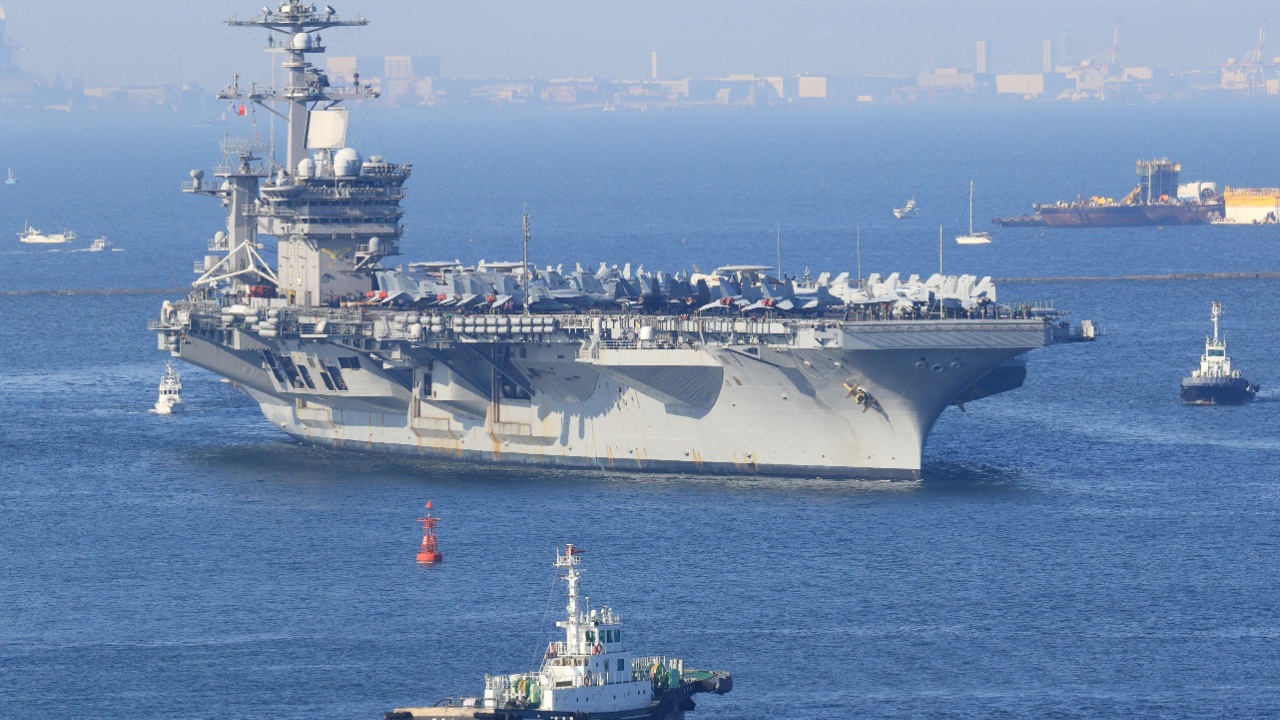
These Two U.S. Carriers Will Soon Operate in the Middle East
Last month, Secretary of Defense Pete Hegseth extended the USS Harry S. Truman deployment to the Middle East for at least a month. It is unclear when the carrier will return to the United States.
The United States Department of Defense (DoD) has significantly increased its presence in the Middle East in recent months, including the deployment of Lockheed Martin F-22 Raptors and F-16 Fighting Falcon fighters and Fairchild Republic A-10 Thunderbolt II close air support aircraft to undisclosed bases in the region.
In addition, at least six Northrop B-2 Spirit bombers are now on the Indian Ocean island of Diego Garcia, well within striking distance of Iran and its regional proxies, including the Houthi militants in Yemen.
The Pentagon also confirmed that two Nimitz-class nuclear-powered supercarriers will soon operate in the region. Though it was previously announced that the USS Carl Vinson (CVN-70) would be deployed to the area, it now appears that USS Harry S. Truman would remain throughout April “to continue promoting regional stability, deter aggression, and protect the free flow of commerce in the region,” Pentagon spokesman Sean Parnell said in a statement.
“To complement the CENTCOM maritime posture, the secretary also ordered the deployment of additional squadrons and other air assets that will further reinforce our defensive air-support capabilities,” Parnell added.
“The United States and its partners remain committed to regional security in the CENTCOM (area of responsibility) and are prepared to respond to any state or non-state actor seeking to broaden or escalate conflict in the region.”
The DoD Continues Aircraft Carrier Rotations Abroad
Last month, Secretary of Defense Pete Hegseth extended the USS Harry S. Truman deployment to the Middle East for at least a month. It is unclear when the carrier, which arrived in the region in December, will return to the United States. In February, the 100,000-ton supercarrier was under emergency repairs in Greece following a collision with a Panamanian cargo ship while operating in the Mediterranean Sea near Port Said, Egypt.
The United States Navy has been rotating aircraft carriers to the Middle East region since the October 7, 2023, attacks carried out by the Iranian-backed Hamas in southern Israel, which sparked the war in Gaza.
The Yemen-based Houthi militants, who Tehran also backs, then responded by targeting commercial shipping in the Suez Canal and the Red Sea. The U.S. warships deployed to the region have helped protect the maritime traffic while also seeking to deter any escalation of the conflict.
The USS Carl Vinson will be the sixth U.S. Navy carrier deployed to the Middle East in the past year and a half. It follows the deployment of USS Gerald R. Ford, the lead vessel of the newest class of nuclear-powered supercarriers, and the Nimitz-class flattops USS Dwight D. Eisenhower, USS Theodore Roosevelt, USS Abraham Lincoln, and the USS Harry S. Truman, respectively.
The USS Carl Vinson will take about two to three weeks to reach the Middle East. Satellite images showed the warship in the Sulu Sea off the Philippines‘ coast. It had recently visited Guam, a territory in the U.S.
The U.S. Navy‘s oldest operational carrier, USS Nimitz, has also begun its deployment, likely its final, in the Western Pacific. This will allow the service to maintain a presence in the Indo-Pacific while increasing its potential firepower in the Middle East.
The deployment of the carriers and other DoD assets could be seen as the Trump administration‘s twenty-first-century take on gunboat diplomacy. President Donald Trump has threatened Iran with secondary tariffs and also with bombing if Tehran is unable to reach an agreement over its nuclear program with the United States.
Trump may not be talking softly, yet, he is indeed carrying a big stick.
“If they don‘t make a deal, there will be bombing, and it will be bombing the likes of which they have never seen before,” Trump said during a phone call with NBC News‘ Kristen Welker on Sunday.
That same day, Iranian President Masoud Pezeshkian said his country rejected direct negotiations with Washington but left the possibility of indirect negotiations open. The United States withdrew from the previous nuclear deal with Iran during Trump‘s first term in 2018.
Though no attack may come against Iran, the United States has continued to carry out strikes against the Tehran-backed Houthis. With the increase in bombers and carriers, any bombing in the region could be the likes that haven‘t been seen before.
About the Author: Peter Suciu
Peter Suciu is a Michigan-based writer. He has contributed to more than four dozen magazines, newspapers, and websites with over 3,200 published pieces over a twenty-year career in journalism. He regularly writes about military hardware, firearms history, cybersecurity, politics, and international affairs. Peter is also a Contributing Writer for Forbes and Clearance Jobs. You can follow him on Twitter: @PeterSuciu. You can email the author: [email protected].
Image: Shutterstock/ Daisuke Shimizu.